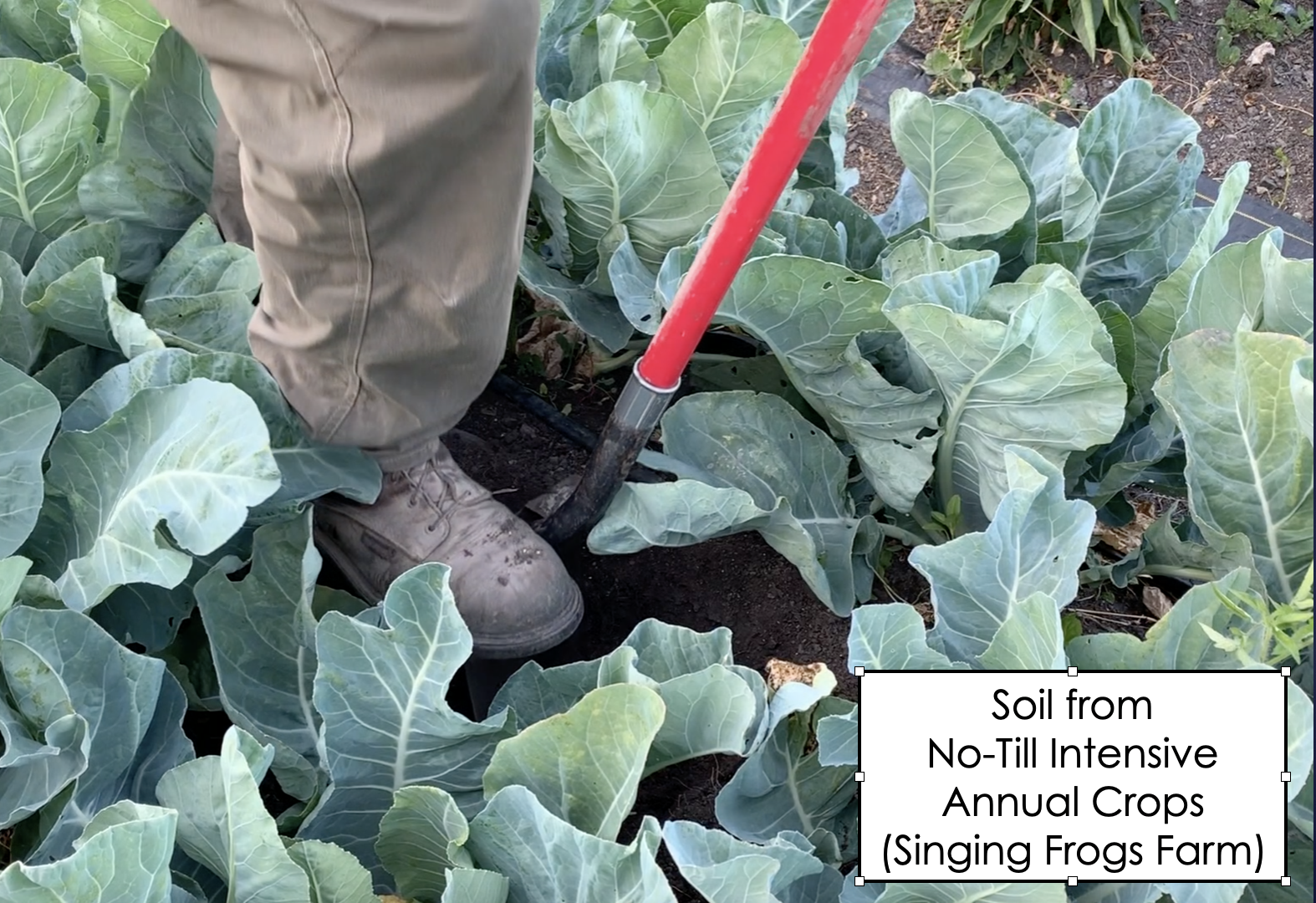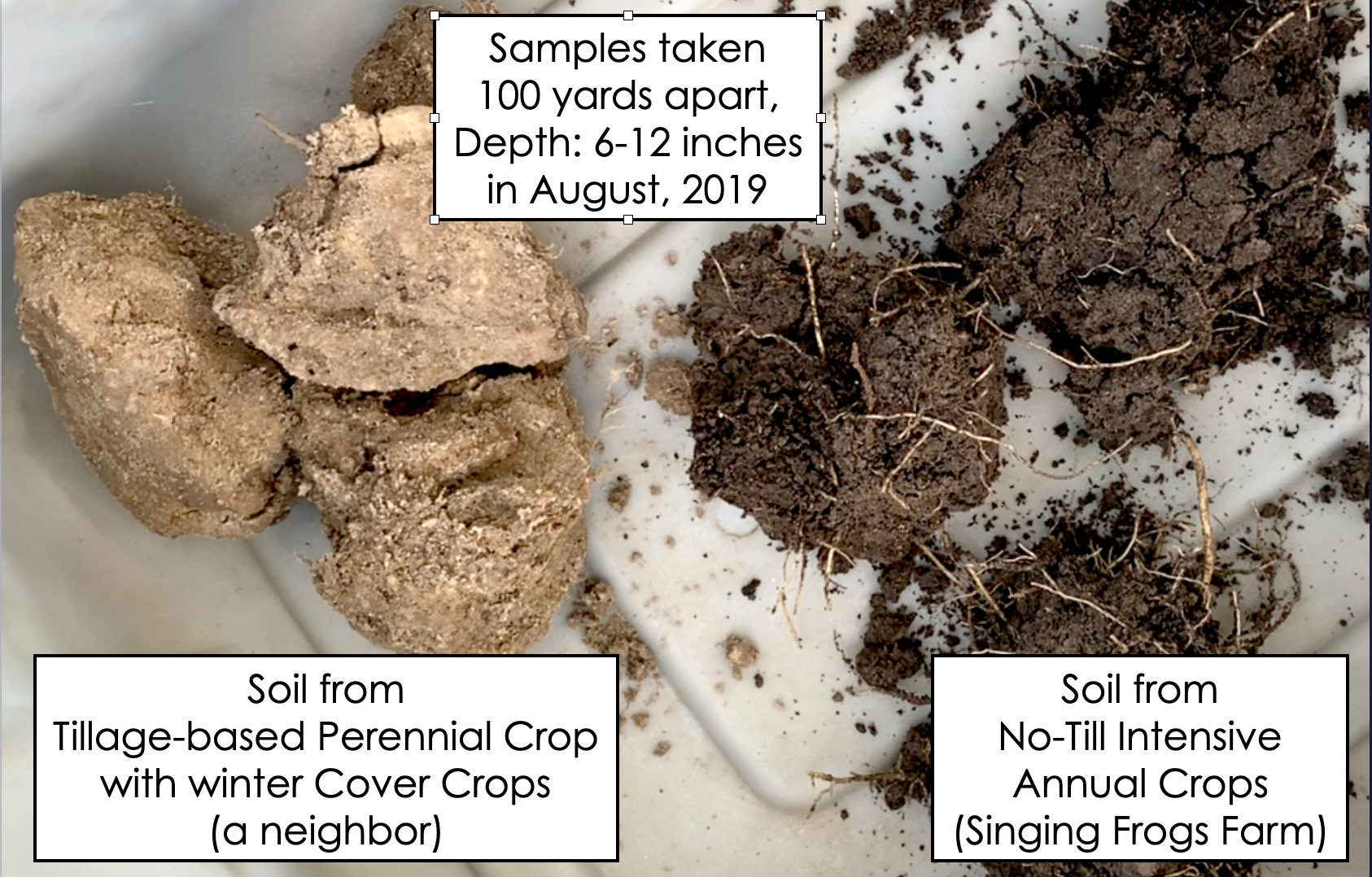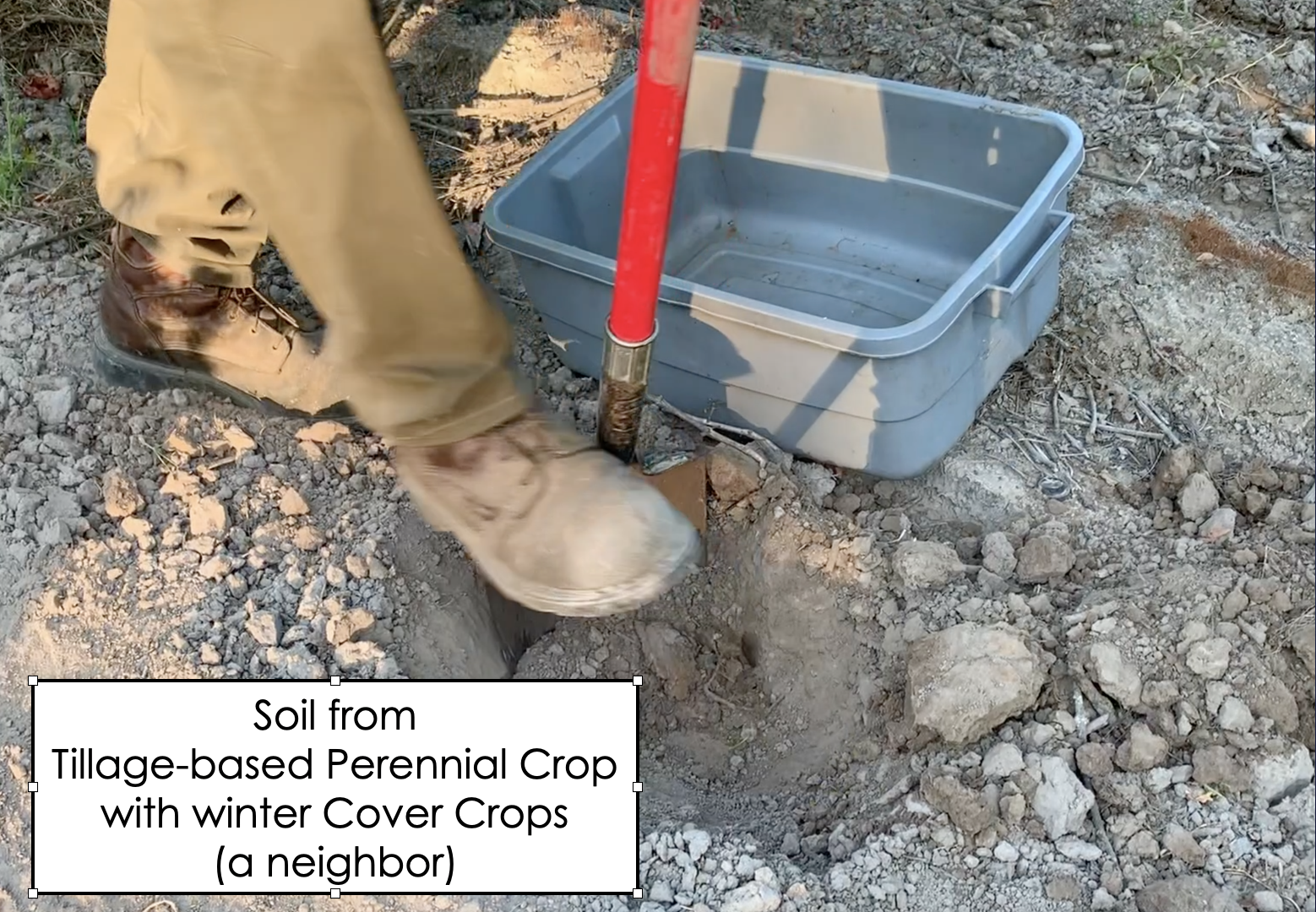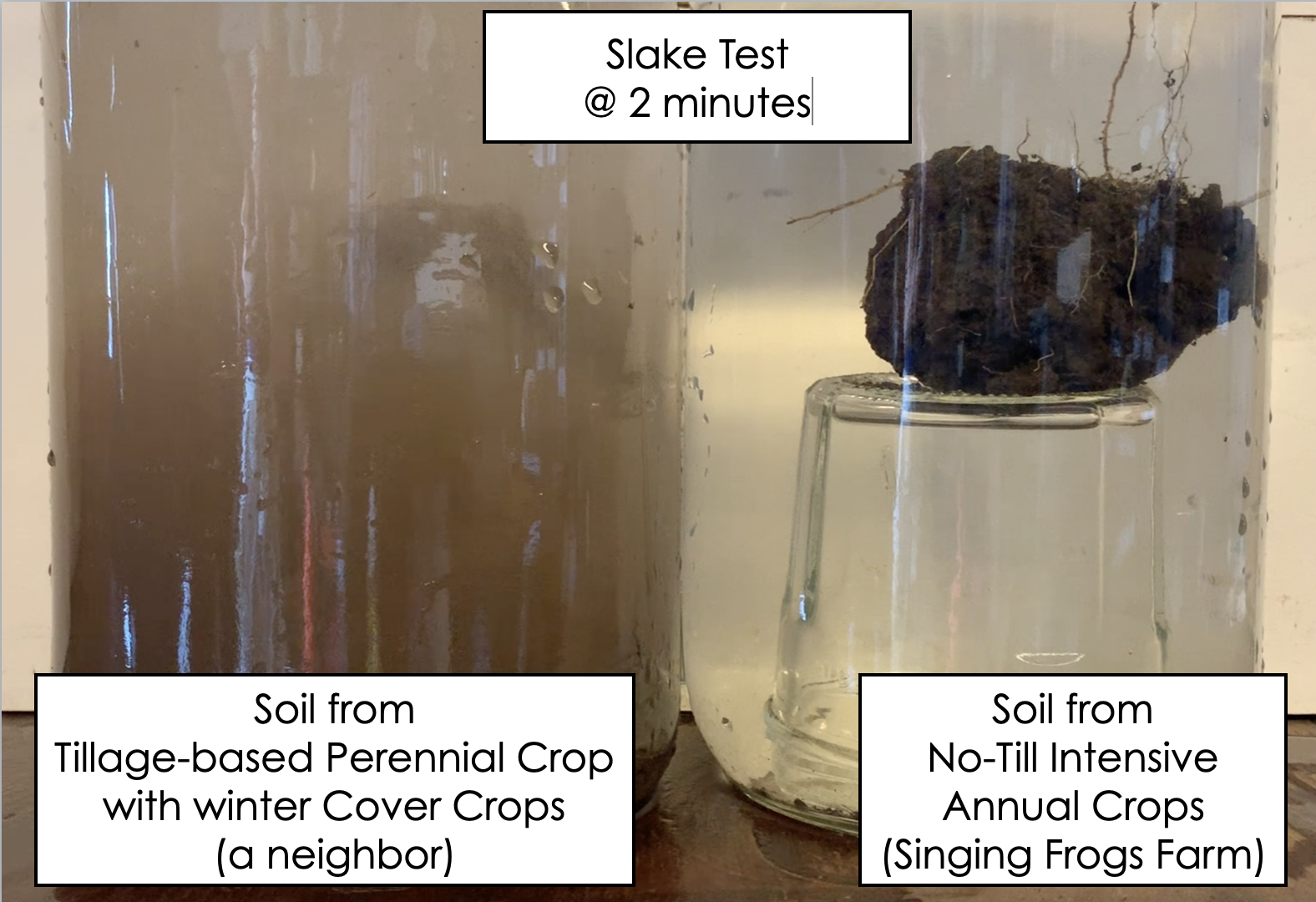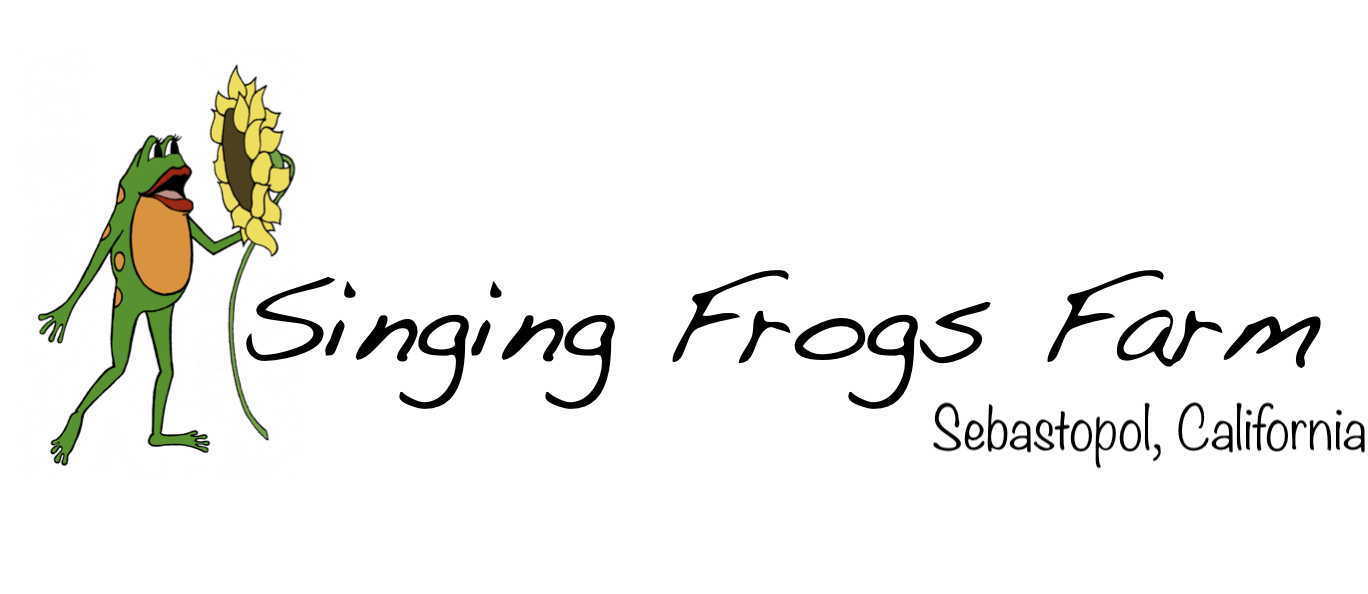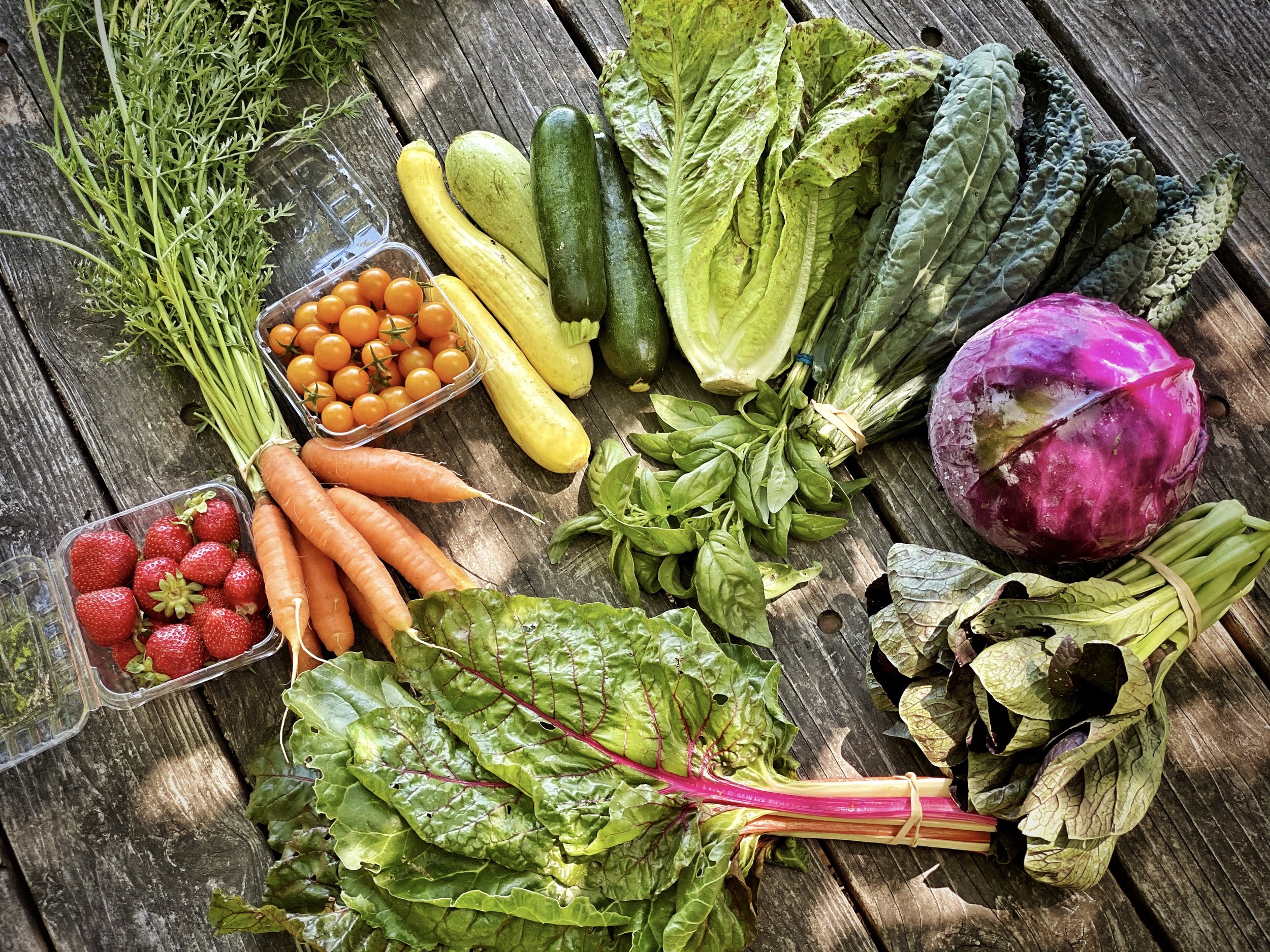
Nutrient Density


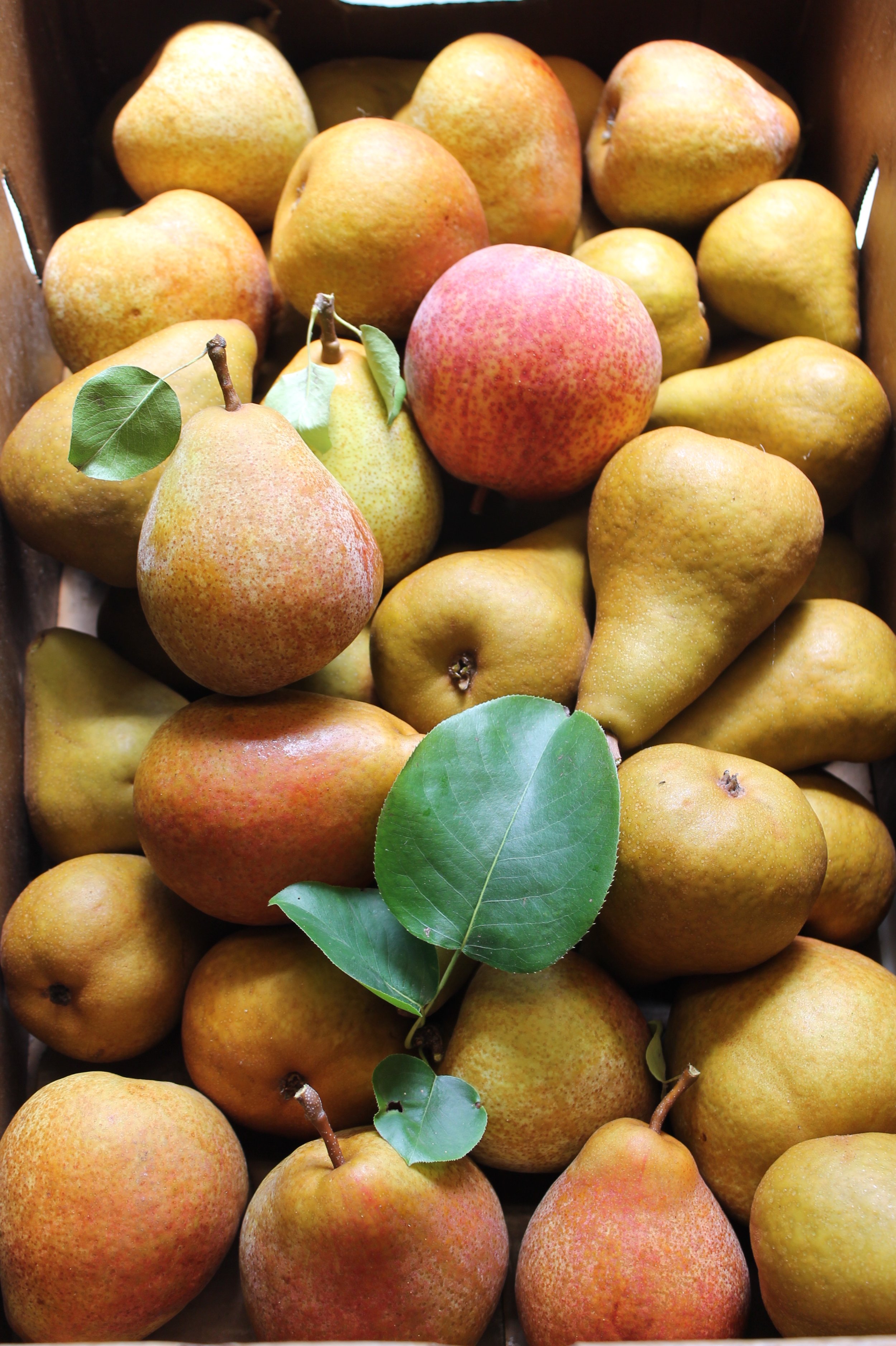



Soil Health = Human Health
At Singing Frogs Farm, we strive to take care of our soil for a myriad of reasons: from building ecology, to water management, to carbon sequestration, to increased productivity, and because healthier, richer soil means healthier, more nutrient-dense crops.
This is intuitive, and the science is finally arriving to prove it.
In late 2018, we were approached by David Montgomery and Anne Bikle, a geologist and botanist team from the University of Washington. Individually and together, this couple have written “Dirt, The Erosion of Civilizations,” “The Hidden Half of Nature,” and “Growing a Revolution: Bringing our Soil Back to Health”, plus more. While their earlier books focused on how we humans have degraded our vital topsoil over the millennia, and especially this past century through mechanized plowing and tillage, their more recent book “Growing a Revolution” left them wondering about the next logical step in their quest for a… well… revolution in soil management:
Does healthier soil translate to healthier food grown in that soil?
They invited us to be a part of their research, along with the assistance of the pre-eminent soil biologist previously from the USDA, Ray Archuleta, and to be included in a future book. Their book “What your Food Ate” , and its research, came out in June 2022. The book is a deep dive into the history of nutrition and brings a lot of information on farming practices and fertility. Hint, you can find the section on Singing Frogs on pages 114-131.
…
In the summer of 2019, David, Anne, and Ray all visited Singing Frogs Farm during the peak of summer heat and dryness. While we were embarrassed at the condition of our soil and fields (as we are most peak dry seasons), the three of them were very excited. We performed a series of soil tests and sampling at our farm as well as at another organic tillage-based vegetable farm in Sonoma County as a control.
David and Anne’s research for their book sought pairs of farms, orchards and ranches across the U.S. For each pair, they wanted similar soil types and identical farm products, but different soil management techniques and different soil health profiles. We were paired up with a local organic farm that does the commonplace tillage practices and supplies our local Whole Foods (and other locations) with their vegetables.
We found the fields at the other farm well cared for but bare and dusty from tillage. They were incorporating cover crops and beneficial plantings and peppered Ray for advice. They are certainly organic but not regenerative. The soil tests showed their farm was in the median range for other typical organic, tillage-based vegetable farms on similar soil types.
🌱 By comparison, the soil at Singing Frogs Farm had over 400% more soil carbon, our water infiltration rate (to reduce erosion) was almost 7 times greater, our soil had almost 300% more soil biology, and our overall soil health score (taken from 30+ variables) was roughly 3 times greater.
Then we grew out the same crop…
We both grew cabbage from the identical seed, from the same seed package. Later that autumn, we fresh harvested some of these cabbages from our and the other farm. With cold packs inside a padded cooler mailer the cabbages were FedExed to the lab within an hour of harvest. While many scientists, and many of us, assume (with prejudice) that food grown in healthy soil will have greater nutrient density than food grown in poorer soils, the science to back up this assertion has been slow to materialize.
David and Anne succeeded in collecting soil samples and harvest samples from comparable pairs of farms across the U.S. They have samples from cabbage, peas, corn, soy and sorghum.
The results are astounding and have presented by David, Anne and Elizabeth at several conferences since August 2021 and now via journal article.
All of the regenerative farms in their study had more nutrient dense produce than their local, organic, non-regenerative counterparts, but the difference for us was exceptional:
🌱 Singing Frogs had the highest soil health scores, and highest nutrient density scores of all the farms. Compared with our local, organic counterpart, we had 41% more Vitamin K, 70% more Vitamin E, 31% more Vitamin B1, 60% more vitamin B3, 23% more vitamin B5, 41% more calcium, and third less of the sodium, but the biggest difference was more than twice the phenolics and phytosterols and 48% more Carotenoids…. the building blocks of a healthy functioning immune system!
David and Anne also compared the nutrient density of our cabbage, as well as our carrots and spinach, with organic cabbage, and with conventional carrots and spinach from a USDA study a few years back.
🌱 The nutrient densities of our vegetables were between 100% and 400% greater than those of the conventional vegetables in the USDA study.
Montgomery DR, Biklé A, Archuleta R, Brown P, Jordan J. 2022. Soil health and nutrient density: preliminary comparison of regenerative and conventional farming. PeerJ 10:e12848 https://doi.org/10.7717/peerj.12848
Check out Nat Geo Article!
This study along with other studies on nutrient density featured in National Geographic Online article May 2022 with photos from Singing Frogs Farm.
